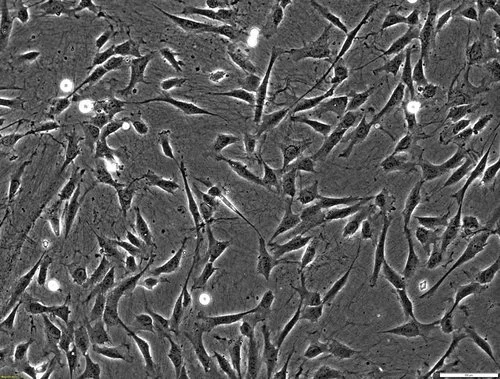NeuroMatrix™: Addressing Challenges in Neuronal Culture
For scientists studying neurodegenerative disease, investigating new neuroactive drugs, or looking to avoid neurotoxicity in new pharmaceuticals (neurotoxicity is the #1 cause of clinical stage drug attrition), the use of neuronal cell culture shows great promise for modeling aspects of the most complex organ in the body, so that we may gain new insights to advance basic and translational research. Still, neuronal cell culture has yet to fulfill its substantial potential, and remains exceptionally challenging, for several reasons:
A long wait - and short longevity. Mature cell phenotypes are crucial in neurological studies, given that diseases of this type often develop later in life. Unfortunately, neuronal cells are extremely difficult to culture; the maturation rate of human pluripotent stem cell-derived neurons is very slow, often requiring several months. Compounding this issue is the fact that once they reach maturity (or at least relative maturity), these neural cells have a relatively short window in which they can be assayed by scientists before they begin to lift off of the culture dish.
Traditionally, scientists and researchers have used rodent models in their neurotoxicity studies, in response to the challenges of growing human pluripotent stem cell-derived neurons. However, animal models are not always accurate predictors of human response, given the differences in physiology.
NeuroMatrix™: An Advanced Solution
To confront these challenges, StemBioSys has developed and launched the NeuroMatrix™ extracellular matrix (ECM). Based on our previous experience that recreating a cell’s natural environment allows them to behave more naturally, NeuroMatrix™ is derived from cortical astrocytes. Astrocytes are the most abundant of the glial cells within the central nervous system. These “support cells” provide a wide range of different functions necessary for neuron survival; they can also be successfully cultured and expanded, unlike other neuronal cell types. NeuroMatrix is produced by astrocytes grown to confluence and induced to secrete an ECM. The cells are then removed using a non-ionizing detergent, leaving the excreted ECM behind.
NeuroMatrix™ offers distinct advantages:
Increased maturation rate. Observations of neurons on NeuroMatrix™ have shown a greater rate of maturation than on traditional substrates, as neurons migrate along matrix fibers to form cell clusters.
Scalability and flexible application. NeuroMatrix™ is comparatively easy to use and can allow researchers to culture neurons on a larger scale. It has been used to culture a variety of iPSC-derived neural and glial cells, including cortical neurons, cortical astrocytes, microglia, spinal motor neurons and neural stem cells.
Biological relevance and nuanced cell health research. NeuroMatrix™ uses human-derived, non-embryonic cells - a more effective alternative to animal models, which can be poorly predictive. StemBioSys also plans to release NeuroMatrix™ on multiwell microelectrode array (MEA) plates in the near future, to allow researchers to study subtle distinctions in cell function.
Located in San Antonio, TX, StemBioSys develops cell culture technologies licensed from The University of Texas Health Science Center, San Antonio. Our work represents the next evolution in stem cell research. For more information about StemBioSys and our patented technology, please contact us.

